
Roots
In the vibrant saga of textured hair, each curl and coil whispers tales passed down through generations, holding the memories of hands that cared for it, rituals that shaped it, and societies that perceived it. To speak of the scientific changes that arise with heat exposure to textured hair is to speak to more than mere molecular shifts; it is to engage with a living archive, a narrative deeply intertwined with the heritage of Black and mixed-race communities. For so many, hair has been a canvas of identity, a symbol of resistance, and a testament to enduring beauty despite attempts to diminish its natural form. Understanding heat’s touch on these unique strands calls us to honor this profound lineage, to see the science not as an isolated truth, but as another layer within a much older, deeper story.
The journey of textured hair through time reveals a constant interplay between its biological design and the cultural forces that have sought to redefine it. From ancient African societies where hair expressed status, lineage, and spiritual connection, to the challenging eras of the diaspora when ancestral styling practices were curtailed, the resilience of these strands mirrors the resilience of a people. The very act of altering hair texture, often through heat, became a complex practice, sometimes a choice for adaptation, at other times a response to external pressures.
To understand the scientific nuances of heat today, we must first recognize the historical landscape upon which these techniques first imprinted their mark. It is a dialogue between the microscopic world of the hair fiber and the expansive realm of human experience, all rooted in the undeniable spirit of our hair’s deep past.

Hair Anatomy and Its Ancestral Echoes
Hair, at its core, is a protein fiber. It emerges from the scalp, a living testament to the biological heritage we carry. For textured hair, this elemental truth holds particular significance. Each strand begins its life within the follicle, a tiny organ nestled beneath the skin.
The shape of this follicle, often elliptical for textured hair, contributes to the characteristic curl, coil, or wave pattern seen on the surface. This shape influences how the hair grows, its natural inclination to twist upon itself, creating the stunning variations we celebrate. Inside the hair shaft, three primary layers unfold ❉ the Cuticle, the Cortex, and sometimes the Medulla. The cuticle, the outermost protective layer, consists of overlapping, scale-like cells.
The cortex, the thickest layer, gives hair its strength, color—through melanin—and much of its texture. The medulla, the innermost core, may or may not be present in all hair types. These structures, inherited across generations, hold the blueprint for how textured hair responds to its environment, including the application of heat.
Ancestral practices, though not always articulating their understanding in scientific terms, often intuitively engaged with these anatomical realities. The application of natural butters and herbs in traditional African hair care, for instance, served to condition and protect the outer cuticle, preserving moisture and strength. Such practices, passed down through oral tradition and lived experience, represent an early, profound understanding of hair health.
The very act of braiding or threading, common across many African cultures, minimized manipulation and offered protection, implicitly safeguarding the hair’s structural integrity. These methods, born of wisdom and necessity, stand as a testament to deep knowledge of textured hair’s fundamental needs, long before modern science provided its detailed schematics.
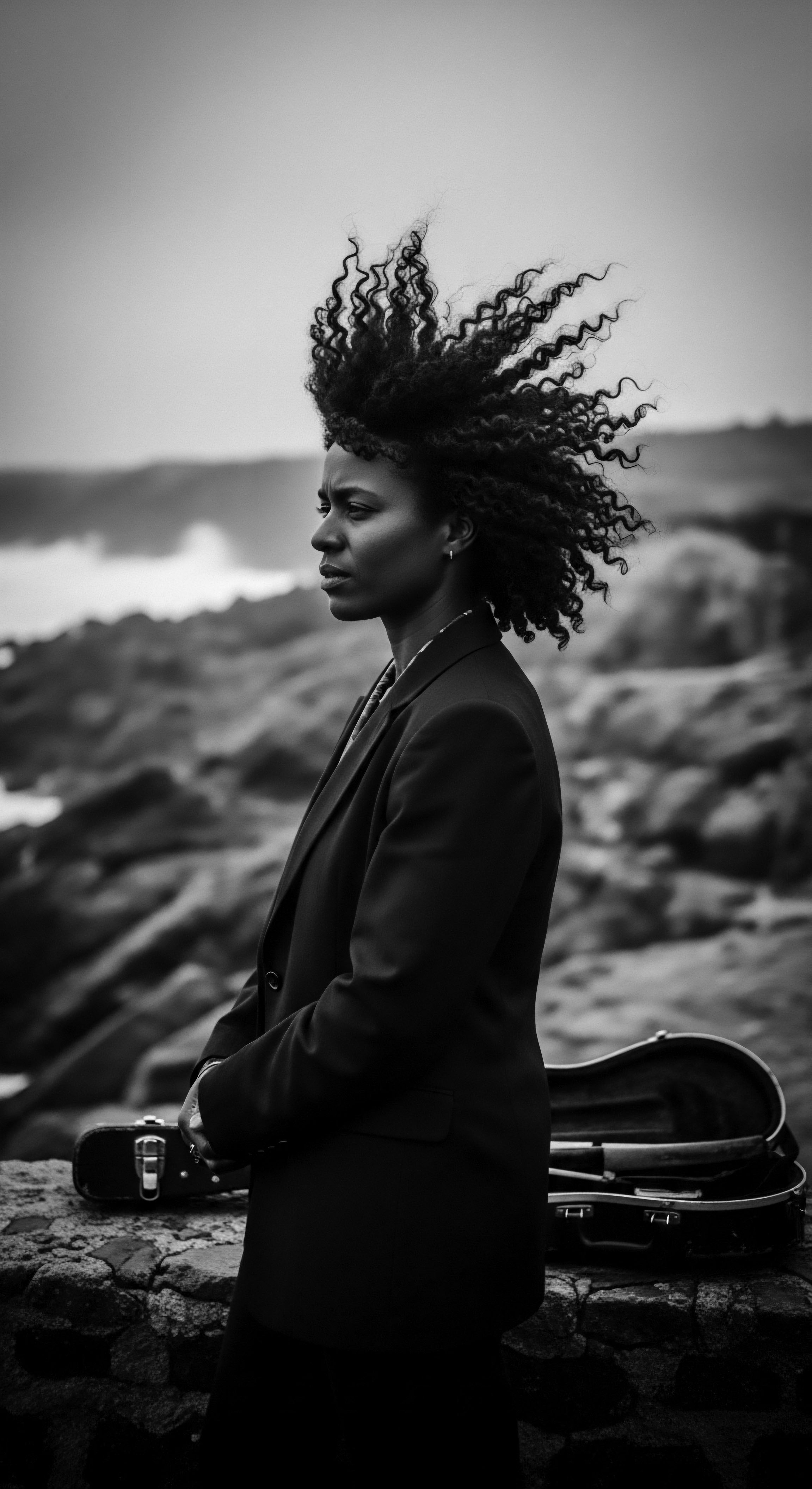
How Heat Alters Hair’s Core Structure?
When heat touches textured hair, it sets in motion a cascade of molecular events, fundamentally altering the hair’s structure. The hair fiber, composed primarily of Keratin Proteins, relies on a delicate network of bonds to maintain its natural shape and strength. Two types of bonds are particularly relevant here ❉ Hydrogen Bonds and Disulfide Bonds. Hydrogen bonds, temporary and weaker, are responsible for the hair’s ability to be temporarily reshaped when wet or heated.
They break when water enters the hair or when heat is applied, and reform as the hair cools and dries, setting a new temporary shape. This is the scientific basis behind a blow-out or a heat-induced curl. Disulfide bonds, on the other hand, are stronger, permanent chemical bonds that determine the hair’s natural curl pattern. They are the backbone of hair’s inherent architecture.
However, excessive temperatures or prolonged exposure can cause more than temporary reshaping. When temperatures surpass certain thresholds, often cited around 180°C (356°F) to 230°C (446°F), the keratin proteins within the hair undergo a process called Denaturation. This means the protein structures lose their natural configuration. Specifically, the α-keratin, the helix shape common in hair, can irreversibly convert to β-keratin, leading to a weaker, less elastic fiber.
This transformation can result in a permanent alteration of the hair’s curl pattern, leaving sections that are straightened, limp, or inconsistent. The hair’s ability to revert to its natural curl after being wet becomes compromised, a tell-tale sign of heat damage.
Beyond protein changes, heat also causes significant moisture loss. Hair contains about 17% water, much of which is bound to keratin proteins. When high heat is applied, this water rapidly evaporates. If the heat is too intense, or applied to damp hair, water inside the hair shaft can turn to steam, forming tiny bubbles within the fiber—a phenomenon sometimes called Bubble Hair.
These bubbles create voids and weaken the hair, making it prone to breakage. This loss of moisture leads to dryness, brittleness, and a rougher texture. The cuticle layer also suffers; high temperatures can cause the overlapping scales of the cuticle to lift, crack, or even fuse, compromising the hair’s protective barrier. An open cuticle leaves the internal cortex exposed, leading to increased Porosity, further moisture loss, and susceptibility to environmental and mechanical harm. The accumulated impact of these changes renders the hair less robust, diminishing its natural shine and increasing its propensity for split ends and breakage.
The careful balance of protein structure and water content within textured hair is critically disrupted by excessive heat, leading to weakened strands and altered curl patterns.
Historically, heat was often a tool for assimilation. The arrival of pressing combs—or Hot Combs—in the African American community in the late 19th and early 20th centuries, though initially developed in France for European hair, marked a significant shift. These combs, heated on stoves or gas heaters, provided a method to temporarily straighten textured hair, offering a smoother, less kinky appearance. This practice became tied to societal pressures where “good hair” often meant straighter hair, influencing access to employment and social acceptance.
Women and girls would undergo these sessions, often in kitchens or salons, remembering the distinct scent of heated hair and the occasional scalp burns. This era stands as a poignant reminder that while heat offered a means of temporary transformation, it also sometimes brought physical discomfort and complicated relationships with natural hair, reflecting a deeper societal struggle for identity and acceptance.
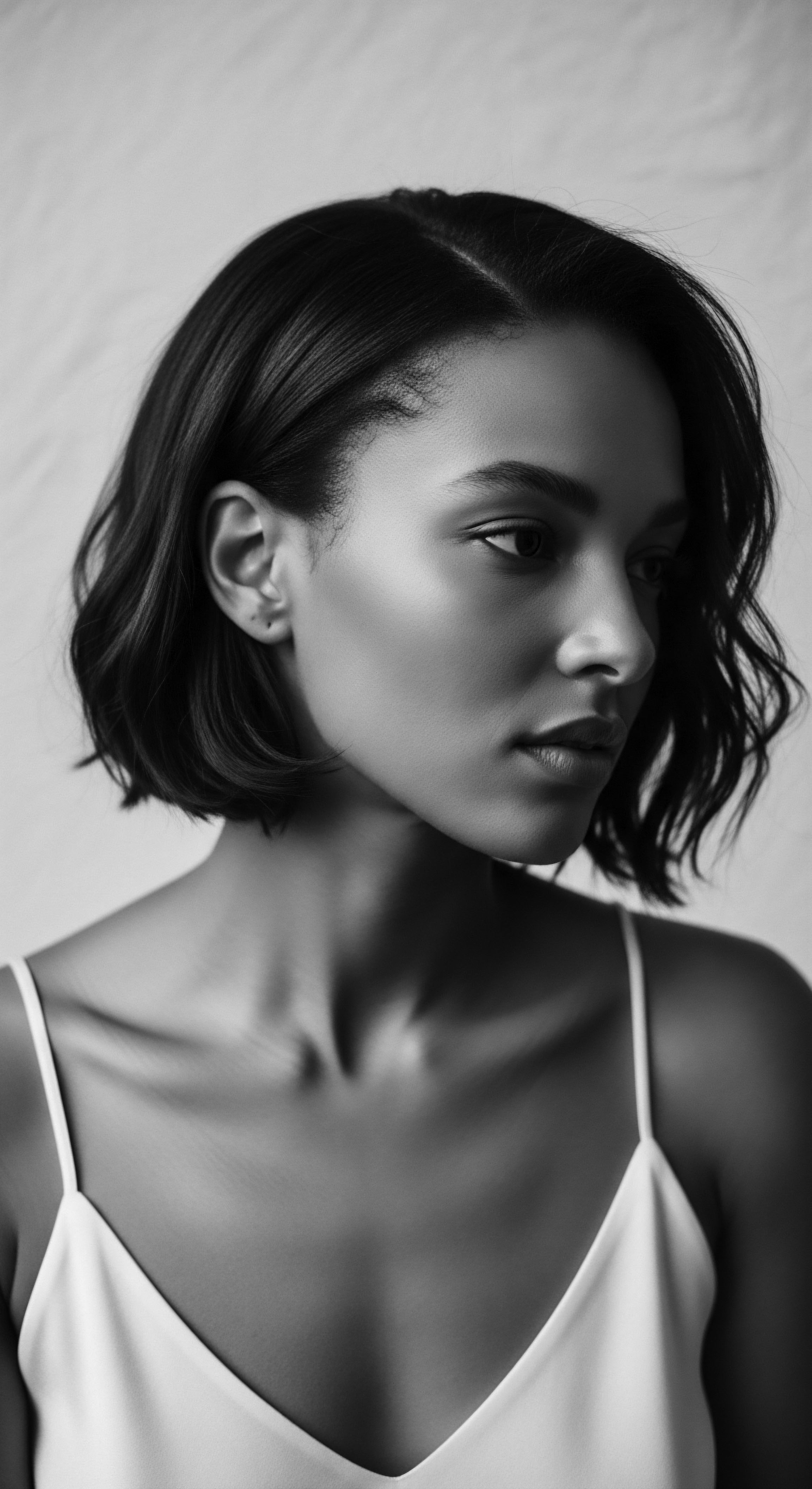
Ritual
The concept of ritual, particularly in the context of textured hair, extends beyond mere routine; it speaks to the intentional, often communal, practices that have shaped hair care across generations. When we consider heat styling, we observe how a scientific process becomes interwoven with deep cultural meaning. From the ancestral art of styling that honored natural texture to the transformative capabilities of modern thermal tools, heat has played a complex part in these living traditions. This section explores how the physical changes in hair with heat exposure have influenced, and been influenced by, these enduring rituals, examining the tools and techniques that define this heritage.
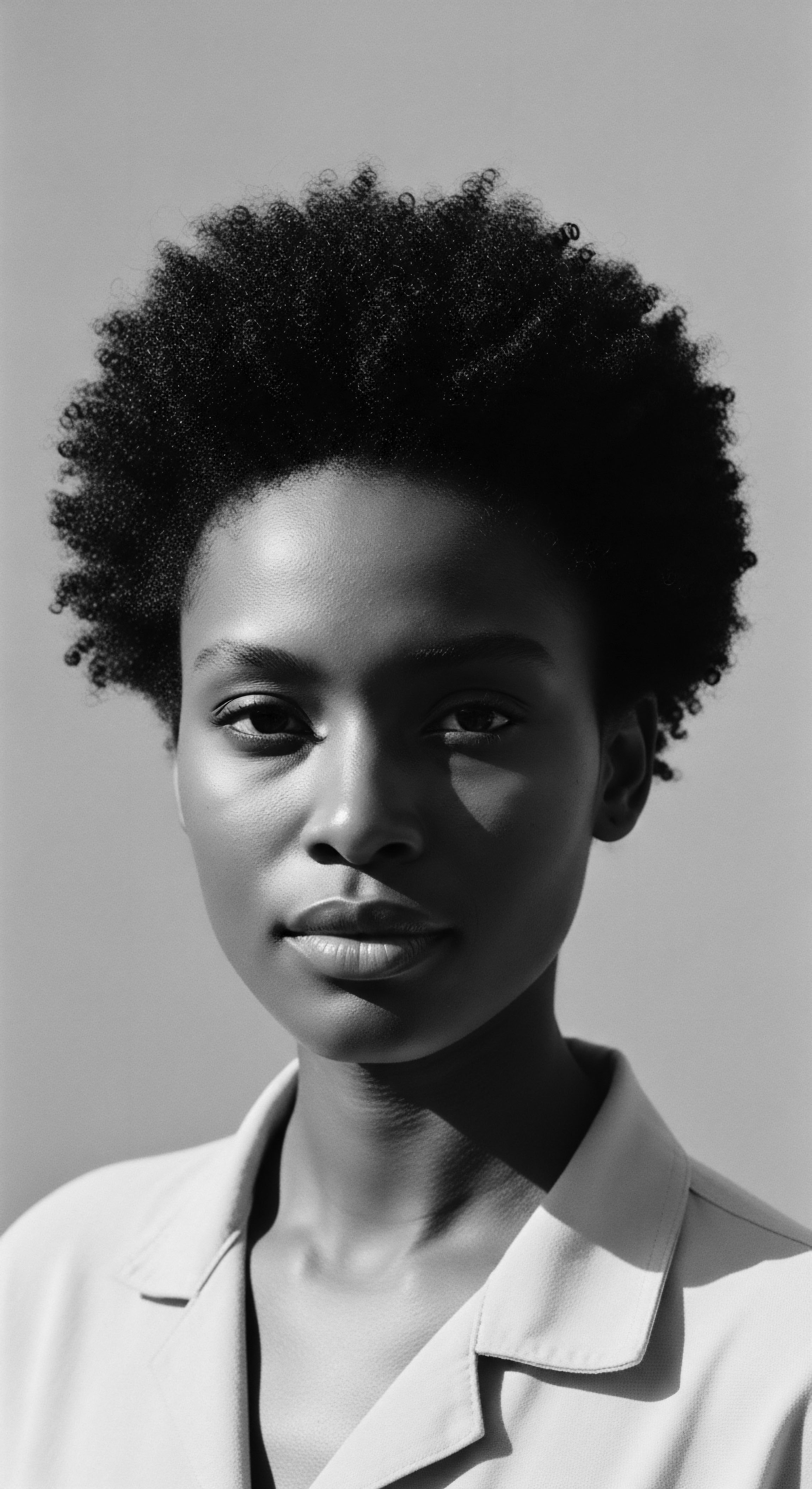
How Did Ancestral Practices Address Hair’s Needs Without Heat?
Long before the advent of modern heat styling, ancestral communities developed sophisticated hair care rituals that prioritized hair health through methods that largely avoided thermal alteration. Across various African societies, hair was not simply a physical attribute; it was a profound symbol of identity, age, marital status, and spiritual connection. The practices that grew from this reverence focused on nourishment, protection, and intricate styling that celebrated the hair’s inherent coil and pattern. Think of the elaborate Cornrows, Braids, and Threading techniques seen throughout West and Central Africa.
These styles, often taking hours or even days to create, offered more than aesthetic appeal. They served as protective measures, minimizing daily manipulation and shielding the hair from environmental elements. Ingredients derived from the earth—natural butters, plant oils, and herbal infusions—were meticulously applied to condition the strands, seal in moisture, and maintain suppleness, all without the need for high temperatures. This wisdom, passed down from elder to youth, represented a deep, intuitive understanding of textured hair’s need for moisture and gentle handling, preserving its natural structure from external duress.
During the period of enslavement, the deliberate shaving of hair by captors aimed to strip away cultural identity and communal bonds. Yet, even in the face of such profound erasure, ingenuity persevered. Enslaved Africans, with limited resources, adapted their hair care. They found creative ways to manage their hair, sometimes using items like kerosene, bacon grease, or butter for moisture, and sheep fleece carding tools as combs.
While harsh, these improvised solutions underscore an unbroken desire to care for hair, albeit under duress, and preserve a semblance of tradition, even if it meant moving away from the more nourishing, heat-free practices of their homelands. The very act of maintaining hair, no matter how crudely, became an act of quiet resistance, a link to a heritage under threat.

Thermal Straightening ❉ A Legacy of Transformation
The introduction of thermal styling tools, particularly the Hot Comb, into Black communities in the late 19th century fundamentally altered hair care practices and perceptions. While Monsieur Marcel Grateau is often credited with early heated styling tools for European hair in France around 1845, it was innovators like Annie Malone and Madam C. J. Walker who revolutionized the use of these tools within the African American community, making them accessible and integrating them into comprehensive hair care systems.
The hot comb, applied after heating on a stove or using an electric heater, uses heat and pressure to temporarily straighten kinky or coily hair. This practice, often called a “press and curl,” became a widespread ritual, particularly for special occasions or Sunday services.
The scientific changes observed during hot combing involve the temporary breaking of Hydrogen Bonds within the hair’s keratin structure, allowing the strands to be reshaped into a straighter configuration as they cool. This temporary alteration provides the desired smooth appearance. However, the repeated and sometimes excessive use of heat, especially without proper preparation and protection, can lead to damage. Temperatures over 180°C can cause changes in the keratin proteins, turning them from α-keratin to a weaker β-keratin, which results in a loss of elasticity and increased brittleness.
This type of damage is often irreversible, manifesting as a permanent alteration of the natural curl pattern, making sections of hair resistant to reverting to their original texture when wet. The cuticle layers can lift or crack, leading to a rough, dull appearance and increased vulnerability.
| Historical Period Pre-Diaspora Africa |
| Tool/Practice Braiding, Threading, Natural Butters |
| Scientific Impact on Hair Minimizes mechanical stress, preserves moisture, maintains cuticle integrity, retains natural curl. |
| Historical Period Late 19th Century |
| Tool/Practice Hot Comb (Stove-Heated) |
| Scientific Impact on Hair Breaks temporary hydrogen bonds; potential for irreversible protein denaturation (α-keratin to β-keratin) and cuticle damage at high temperatures. |
| Historical Period Early 20th Century |
| Tool/Practice Madam C.J. Walker's System (with hot comb) |
| Scientific Impact on Hair Temporary straightening by hydrogen bond reset; products aimed to mitigate moisture loss and cuticle damage, yet cumulative effects of heat remained a concern. |
| Historical Period Mid-20th Century |
| Tool/Practice Electric Hot Combs |
| Scientific Impact on Hair Similar molecular changes to stove-heated combs; increased convenience, but still risks of protein damage and moisture depletion, particularly if heat control is poor. |
| Historical Period The journey of heat styling reflects an ongoing negotiation between desired aesthetics and the underlying scientific integrity of textured hair. |
The “press and curl” represented more than just a style; it was deeply embedded in societal aspirations, allowing Black women to conform to prevailing Eurocentric beauty standards which often favored straight hair. This conformity was sometimes linked to social and economic advancement, with straight hair perceived as more “professional.”, As Bernice Johnson Reagon, founder of Sweet Honey in the Rock, recounted, the hot comb could be a “ritual of passage” for young girls, marking special occasions. Yet, this ritual carried a dual burden ❉ the physical discomfort of burns and the societal pressure to alter one’s natural hair, leading to complex feelings within the community about self-acceptance and beauty. The hot comb’s legacy, therefore, is a powerful historical example of how scientific alteration intersected with profound cultural meaning, shaping identity and beauty ideals for generations.
Heat styling for textured hair, while offering temporary style versatility, fundamentally alters hair’s protein structure and moisture balance at the molecular level.
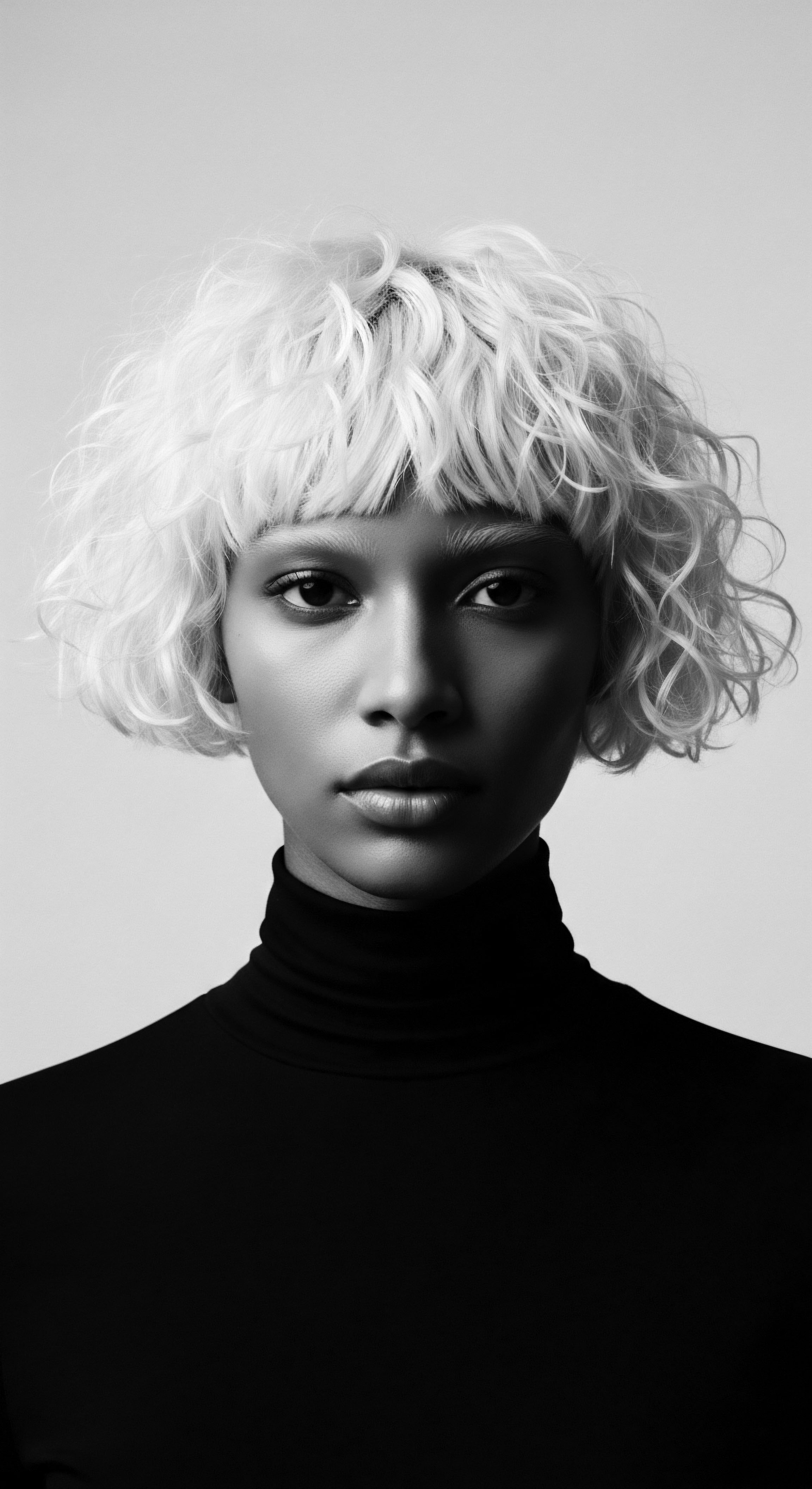
Modern Thermal Tools and Their Effects
Today’s thermal styling landscape includes a variety of tools ❉ blow dryers, flat irons, and curling wands, all designed to reshape hair using heat. The scientific principles remain similar to the hot comb, but the precision of temperature control and advancements in material science have introduced new considerations. These tools function by applying controlled heat, breaking hydrogen bonds to allow for temporary restyling. For textured hair, achieving a smooth or curled look often involves higher temperatures and multiple passes, which can intensify the impact on the hair’s structure.
Temperatures exceeding 180°C (356°F) can lead to the previously mentioned irreversible protein denaturation, reducing elasticity and making hair brittle. Studies have shown that flat irons and curling irons can damage up to 85% of hair’s keratin proteins, leading to dryness and brittleness. The cuticle is particularly vulnerable, with high heat causing scales to lift, crack, and even fuse together, which increases porosity and diminishes shine.
The rate of heat application also matters. Applying high heat to damp hair can be especially detrimental because water inside the hair shaft can rapidly convert to steam, creating internal “bubbles” that damage the hair fiber and compromise its integrity. This internal damage is often invisible to the eye but leaves the hair fragile and more susceptible to breakage. The cumulative nature of heat damage is a crucial point; each exposure adds to the existing structural alterations, meaning that frequent thermal styling, even at seemingly moderate temperatures, can lead to significant, permanent changes over time.
This damage is not reversible; once the protein bonds are broken and the cuticle cracked, the changes are permanent. The only way to mitigate this is to grow out the damaged sections and trim them.
Heat Protectants have emerged as a contemporary ritual in thermal styling. These products create a temporary barrier on the hair shaft, helping to distribute heat more evenly and reducing direct thermal assault on the hair’s core. They often contain silicones or other polymers that can form a protective film, reduce friction during styling, and slow down water evaporation, thereby mitigating some of the direct damage to keratin proteins and the cuticle.
While they offer a shield, they do not negate the effects of excessive heat entirely, underscoring the importance of mindful temperature selection and reduced frequency in heat styling. The continuous pursuit of styling options with minimal impact on hair health marks a modern chapter in textured hair care, informed by both scientific understanding and the enduring lessons of heritage that prioritize preservation.
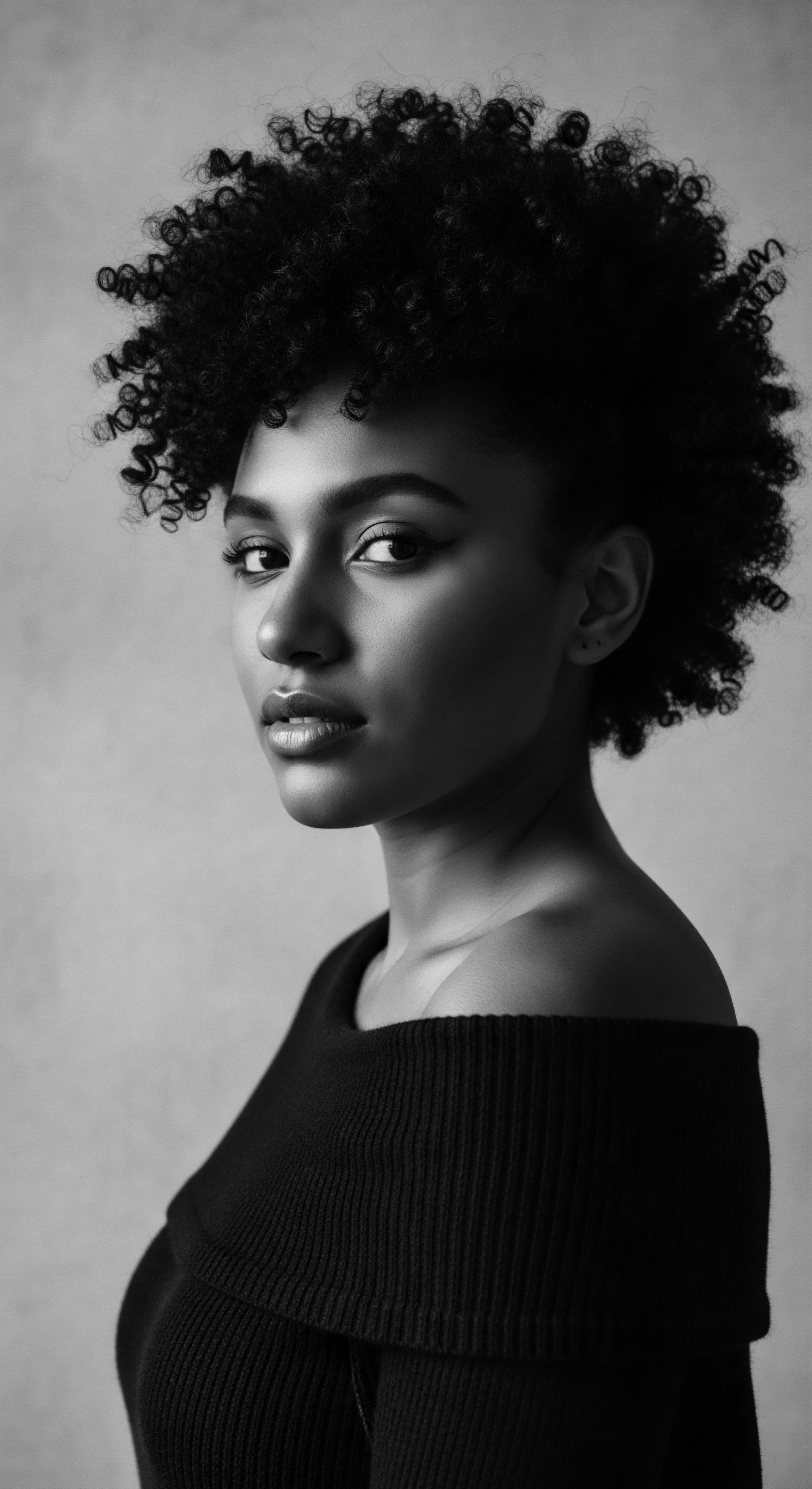
Relay
The concept of relay encompasses the passing of knowledge, practices, and even predispositions from one generation to the next. In the context of textured hair, this involves not only the inherited biological characteristics but also the ancestral wisdom and evolving understanding of its care. This section delves into how scientific understanding of heat’s impact informs holistic care, nighttime rituals, and problem-solving, all while retaining a deep respect for the cultural relay of knowledge that has sustained textured hair traditions for centuries.

Building Personalized Regimens and Honoring Ancestry
Creating a personalized textured hair regimen today means drawing from a well of both ancestral wisdom and contemporary scientific insight. The historical practices of our forebears, though not framed in molecular terms, instinctively addressed the needs of textured hair ❉ moisture retention, gentle handling, and protective styling. These rituals often centered on the use of natural ingredients like shea butter, coconut oil, and various herbal infusions, recognized for their conditioning and protective properties.
Modern science now provides a detailed understanding of why these practices were effective. The unique helical shape and flattened elliptical cross-section of textured hair make it more prone to mechanical damage and dryness compared to straight hair. This structural characteristic means textured hair often struggles more to retain moisture, as its coiled structure can make it harder for natural sebum to travel down the hair shaft evenly. This scientific understanding validates the historical emphasis on hydration and emollients in ancestral care.
When considering heat exposure, this inherent dryness and structural fragility make textured hair particularly susceptible to thermal damage. The water loss and protein denaturation that occur with heat are amplified in hair types already predisposed to dryness and cuticle lifting. A regimen that truly honors heritage integrates this scientific knowledge, choosing methods and products that support the hair’s natural hydration and structural integrity, mindful of heat’s capacity to disrupt these vital elements.
For instance, the use of hair greases in African American communities, while sometimes associated with heat styling, also stemmed from a desire to moisturize and protect. Early formulations, such as those promoted by Madam C. J.
Walker, aimed to improve scalp health and hair growth, even if “healthy” was often conflated with “straight” at the time. The scientific changes observed with heat, such as cuticle lifting and moisture loss, highlight the enduring truth that adequate moisture and gentle handling remain paramount for textured hair health, regardless of styling choices.
The deep understanding of textured hair’s innate fragility underscores the wisdom of ancestral moisture-rich care and thoughtful heat application.

The Nighttime Sanctuary and Bonnet Wisdom
The practice of protecting hair at night is a cornerstone of textured hair care, a ritual steeped in heritage and now firmly supported by scientific understanding. For generations, Black women have wrapped their hair, worn bonnets, or slept on silk and satin pillowcases. These practices, once perhaps intuitive or passed down through observation, serve a crucial scientific purpose ❉ minimizing friction. Textured hair, due to its unique structure, is particularly prone to tangling and breakage from mechanical friction against rough surfaces like cotton pillowcases.
Cotton absorbs moisture from the hair, leading to dryness, frizz, and increased vulnerability to breakage as the hair rubs against it during sleep. Silk or satin, with their smooth surfaces, allow the hair to glide, significantly reducing friction and preventing moisture loss. This simple act of nighttime protection preserves the cuticle layer, maintains hydration, and prevents mechanical stress that can compound the effects of any prior heat exposure.
The Bonnet, an everyday accessory for many, thus becomes a symbol of inherited wisdom, a silent guardian of hair health. It reflects a continuity of care that recognizes hair’s delicate nature, safeguarding the intricate work of styling and the inherent health of the strands. This traditional wisdom finds its contemporary validation in material science, which explains the benefits of smooth fabrics for cuticle preservation and moisture retention. The relay of this practice speaks to a collective experience, a shared understanding of how to honor and protect textured hair, ensuring its longevity and vitality across the sleeping hours.
- Silk Pillowcases ❉ Reduces friction against hair, preventing breakage and preserving natural oils.
- Satin Bonnets ❉ Encases hair completely, safeguarding styles and protecting strands from environmental elements.
- Hair Wrapping ❉ A method of securing straightened hair around the head to maintain sleekness and minimize reversion.

Problem Solving ❉ When Heat’s Touch Lingers
When heat’s effects linger— manifesting as persistent dryness, brittleness, altered curl patterns, or breakage—problem-solving requires a comprehensive approach that respects the hair’s heritage. The scientific reality is that certain heat-induced changes, such as the complete denaturation of keratin or significant cuticle damage, are irreversible. Once the protein structure is permanently altered or the cuticle severely compromised, the hair cannot fully “heal” itself. This difficult truth, explained by hair scientists like Jamien Lim of Dyson, means that the damaged sections must eventually be trimmed away.
However, while heat damage cannot be reversed, its appearance can be managed, and the overall health of the hair system can be supported during the transition. Strategies include:
- Reduced Heat Exposure ❉ Limiting or eliminating thermal styling allows the hair to recover from further stress. This might involve air-drying or opting for heat-free protective styles such as braids, twists, or Bantu knots, styles with deep ancestral roots.
- Deep Conditioning and Moisture Treatments ❉ Consistent application of moisturizing masks and protein treatments helps to temporarily fortify the hair shaft and replenish lost hydration, improving elasticity and reducing breakage in compromised areas. Products containing ceramides, fatty acids, and hydrolyzed proteins can offer superficial repair and strengthen the hair.
- Bond-Building Treatments ❉ Recent advancements in hair science have introduced ingredients, often called “bond builders,” that work to reconnect broken disulfide bonds within the hair’s keratin structure, offering a level of internal repair not previously possible. These treatments, while not fully reversing all heat damage, can significantly improve the hair’s strength and resilience, making it less prone to further breakage as new, healthy growth emerges.
The focus then shifts from reversing the impossible to nurturing new growth and maintaining the integrity of the existing hair as it transitions. This approach resonates with ancestral philosophies that prioritized hair health as a holistic endeavor. Traditional remedies and protective styles, passed down through generations, aimed at preserving the hair’s vitality and protecting it from environmental stressors.
These historical practices provide a template for contemporary “recovery” regimens, reminding us that patience, consistent care, and a deep understanding of hair’s inherent needs are the keys to its well-being. The relay of knowledge, from ancient wisdom to modern scientific discoveries, equips us with the tools to navigate the challenges of heat exposure, ensuring that the legacy of healthy, vibrant textured hair continues.
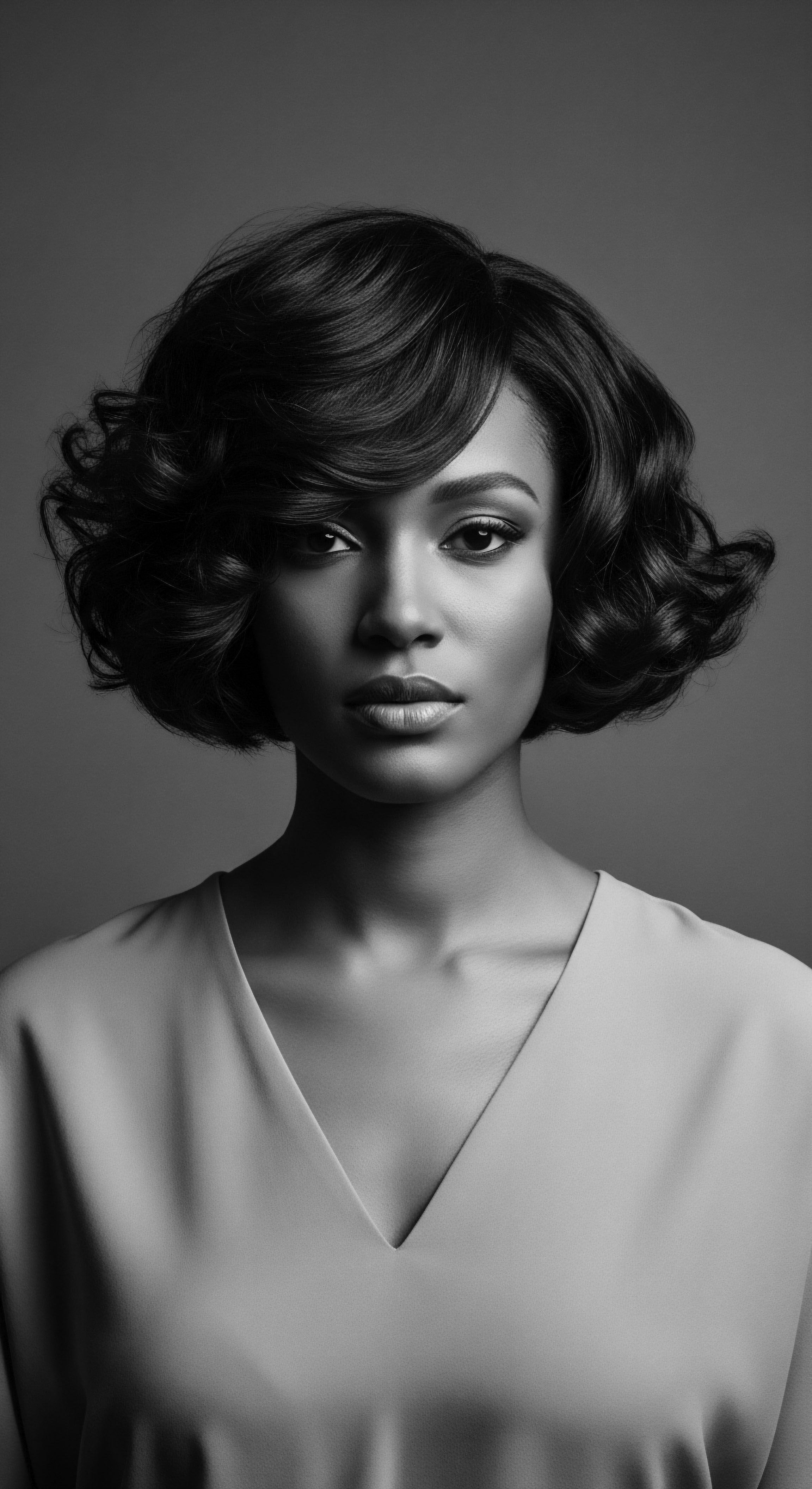
How Can Understanding Hair Porosity Inform Care After Heat Exposure?
Hair porosity, which describes the hair’s ability to absorb and retain moisture, plays a crucial role in how textured hair responds to heat and how it should be cared for afterwards. Hair with high porosity has a more lifted or damaged cuticle layer, making it easy for water to enter but also easy for it to escape. Textured hair often exhibits higher natural porosity due to its coiled structure, and heat styling further exacerbates this by lifting or damaging the cuticle. This increased porosity means heat-damaged hair will often feel dry, absorb products quickly, and struggle to retain moisture, leading to frizz and brittleness.
For hair with heat-induced porosity, the care regimen must prioritize sealing the cuticle and retaining hydration. This means using products that are rich in humectants to draw in moisture, followed by emollients and occlusives to seal it within the hair shaft. Layering products, a common practice in textured hair care, becomes even more important.
Deep conditioning treatments are essential, providing concentrated moisture and ingredients that can temporarily smooth the cuticle. The protein loss that accompanies heat damage also suggests the occasional inclusion of protein treatments to strengthen the compromised areas, as keratin is depleted.
| Aspect of Care Moisture Retention |
| Ancestral or Traditional Approach Natural butters (e.g. shea, cocoa), plant oils, water-based rinses. |
| Modern Scientific Understanding/Solution Emollients, humectants, occlusives; leave-in conditioners and hydrating creams to replenish water content. |
| Aspect of Care Structural Protection |
| Ancestral or Traditional Approach Protective styles (braids, twists), limited manipulation, head coverings. |
| Modern Scientific Understanding/Solution Heat protectants, bond-building treatments, gentle detangling, minimal mechanical friction (silk/satin). |
| Aspect of Care Damage Management |
| Ancestral or Traditional Approach Patience, natural remedies for dryness, accepting reversion. |
| Modern Scientific Understanding/Solution Regular trimming of compromised ends, protein treatments for temporary strength, understanding irreversibility of severe damage. |
| Aspect of Care Care for textured hair, especially after heat exposure, thrives when ancient practices and scientific insights converge. |
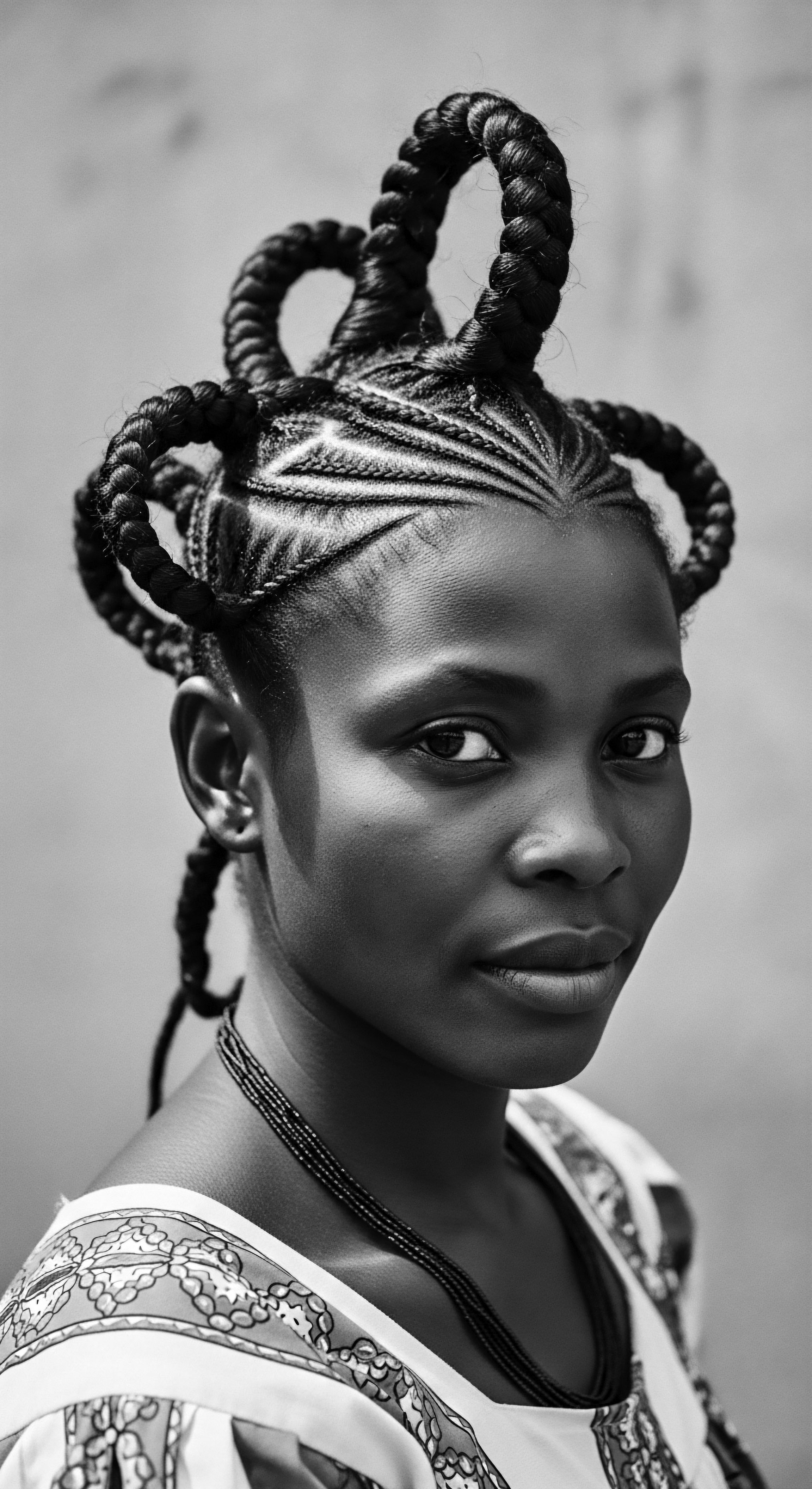
Reflection
The exploration of what scientific changes occur in textured hair with heat exposure is a journey that reaches far beyond the laboratory bench or the styling chair. It takes us into the very soul of a strand, tracing its heritage from ancient lands to contemporary expressions of identity. We have uncovered the intricate dance of keratin and water, the delicate balance of bonds that define texture, and the profound impact that heat, whether from a centuries-old hot comb or a modern flat iron, can exert. Yet, this is never a tale told in isolation.
It is always, always, tied to the living, breathing archive of Black and mixed-race hair traditions. The scientific explanations of protein denaturation or cuticle lifting echo the whispered warnings from grandmothers about avoiding too much heat, or the communal understanding that certain styles offered protection against the elements and societal pressures. This interwoven narrative reveals that understanding the biology of our hair is inseparable from appreciating its cultural weight, its journey through assimilation and reclamation.
The wisdom passed down through generations, those tender threads of ancestral care, inherently understood the fragility of textured hair and its thirst for moisture, even without the language of molecular biology. This deep, intuitive knowledge provided a foundation upon which modern science now builds, confirming the efficacy of practices like protective styling and nighttime rituals. As we move forward, the spirit of Roothea encourages us to carry this holistic perspective ❉ to seek knowledge in both the precise insights of science and the rich lessons of our shared heritage.
Our hair, in its myriad textures and glorious forms, remains a powerful statement. It stands as a symbol of our past, a canvas for our present, and a promise for a future where every strand is understood, honored, and celebrated in its authentic splendor.
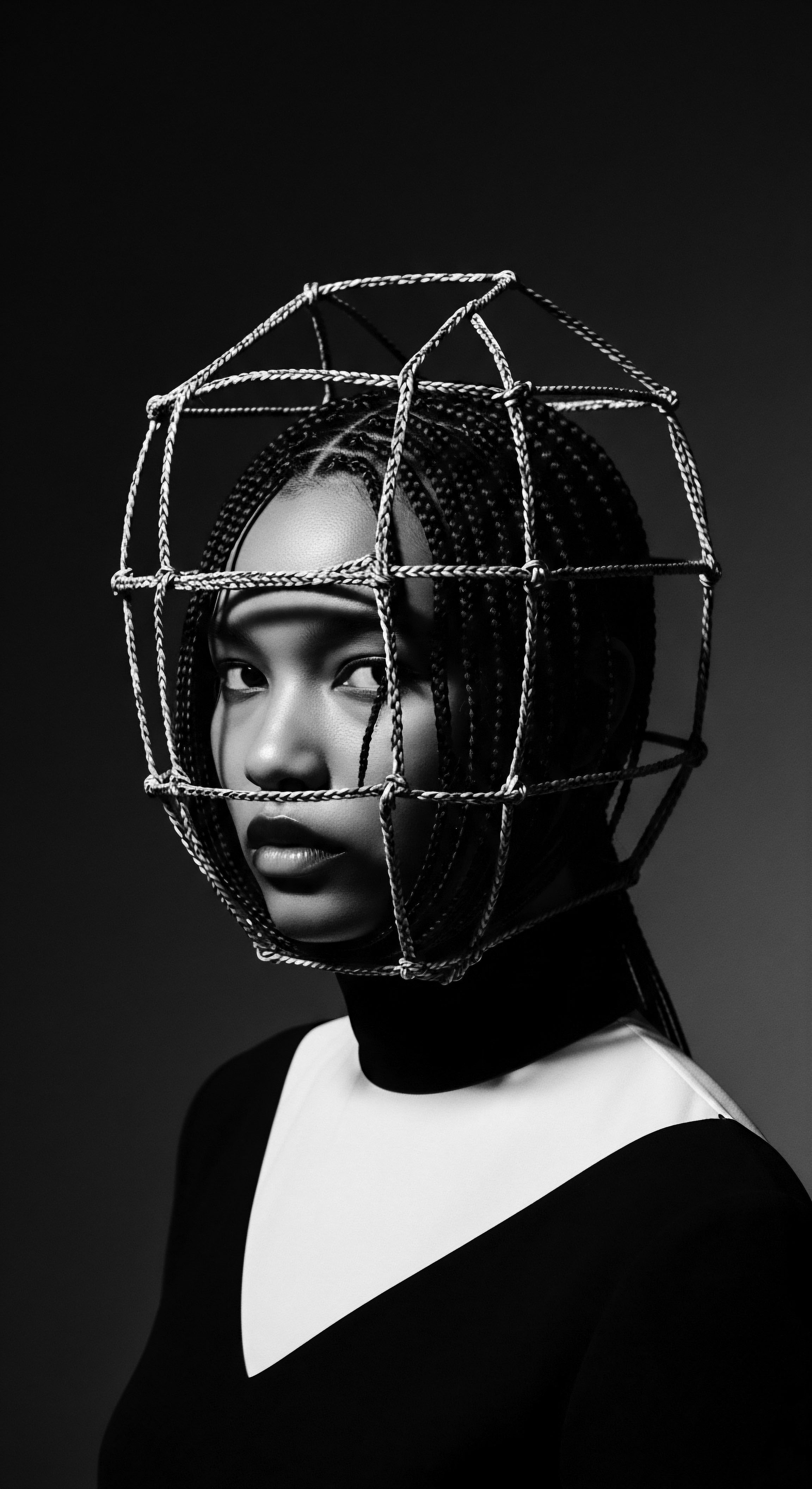
References
- Auster, G. (2018). Kinks, Coils and The Culture. City on a Hill Press.
- Byrd, A. & Tharps, L. L. (2001). Hair Story ❉ Untangling the Roots of Black Hair in America. St. Martin’s Press.
- Campbell, M. (2020). A Sacred Legacy ❉ On Black Hair And The Revolutionary Power of Self-Expression. GirlsOnTops.
- Davis, S. A. (2001). The science of black hair ❉ A comprehensive guide to textured hair care. Saja Publishing Company.
- Dussaud, A. Rana, B. & Lam, H. T. (2013). Progressive hair straightening using an automated flat iron ❉ function of silicones. Journal of Cosmetic Science, 64(2), 119-131.
- Heaton, S. (2021). Heavy is the Head ❉ Evolution of African Hair in America from the 17th c. to the 20th c. Library of Congress.
- Mantuan Gasparin, R. et al. (2025). Porosity and Resistance of Textured Hair ❉ Assessing Chemical and Physical Damage Under Consumer-Relevant Conditions. MDPI.
- Monteiro, A. et al. (2005). Thermoanalytical studies of human hair. Journal of Thermal Analysis and Calorimetry, 82(2), 333-339.
- Reagon, B. J. (2020). Stories from the HistoryMakers ❉ HOT Comb. Forsyth County, North Carolina Library.
- Ruff, R. (2008). Hair Story ❉ Untangling the Roots of Black Hair in America (Revised Edition). St. Martin’s Griffin.
